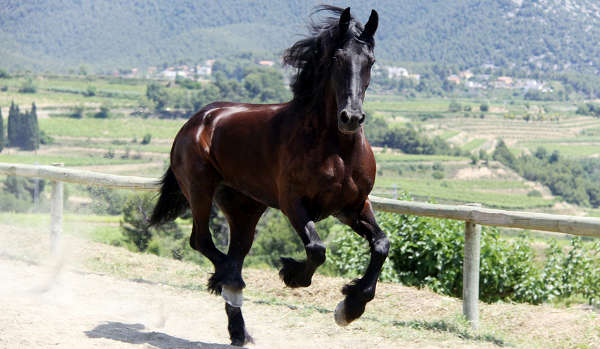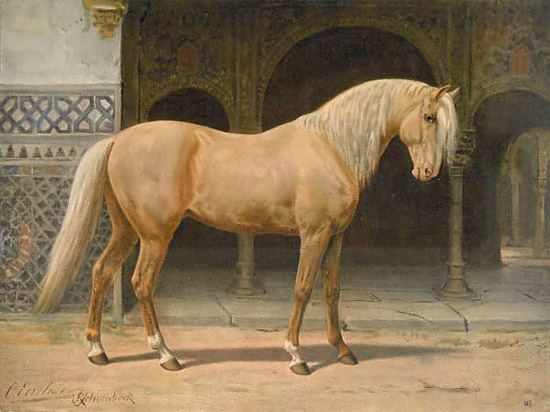
Baroque horses are often the most romantic looking animals, flowing of mane & tail and noble of confirmation. The term generally describes the descendants of athletic war horses in the Middle Ages, with muscular hindquarters an arched neck and a powerful presence.
What Is A Baroque Breed?
Most of the baroque breeds come from common ancestors, like the Neapolitan horse & the Iberian Spanish Jennet. Today’s breeds that fall under the baroque category include the Andalusian, Lusitano, Lipizzan, Friesian, Kladruber & Murgese breeds.

Not just a handsome animals, baroque breeds are known for their smooth yet expressive movement and their easy going nature.
A Classy Ride
These breeds collectively are though to be quite intelligent and easy to work with. This combined with their looks and powerful movement makes them popular as dressage mounts, as deftly displayed by the famous Lipizzan stallions of the Spanish Riding School in Vienna.

These are the romantic & majestic animals that no doubt inspired & fueled many a unicorn myth.
Horse Types
As if horse breeds weren’t confusing enough, there are a variety of types as well. Typing is a much older form of classification and stems mainly from the geography & climate of the animal’s native land. Be sure to check out the list of all the different horse types and keep checking back for more in-depth info about each one.
“…it is the noblest horse in the world, the most beautiful that can be. He is of great spirit and of great courage and docile; hath the proudest trot and the best action in his trot, the loftiest gallop and is the lovingest and gentlest horse, and fittest of all for a king in his day of triumph.”
The Duke of Newcastle, quote from 1667
Beautiful Horses
I would never dare to ride one, feel to tiny, but like to see….
Add the Brasilian Mangalarga Marchador to the list – little known, but a beautiful Iberian breed.
One thing I’d like to add is that most Baroque breeds are of a certain body type which has aided them to excel in classical dressage forms over the years. Most of the breeds featured here are small (14-15.2hh), short-backed, and close-coupled. Short necks are set on sloping shoulders, and hind legs are carried well under powerful haunches. This close-set conformation has allowed for ease of collection and framing, while the powerful hind end provides the impulsion needed for extension and the “airs above the ground”.
I have always love Friesians